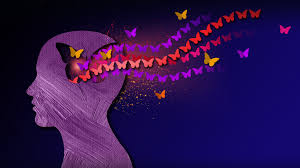 Imagination is the production of sensations, feelings and thoughts informing oneself.
Imagination is the production of sensations, feelings and thoughts informing oneself.
Imagination is the ability to form mental images, ideas, and concepts in the mind that are not present or perceived through the senses.
It involves the creative use of the mind to generate new thoughts, ideas, or possibilities.
Imagination allows us to envision scenarios that have not yet occurred, to think beyond current realities, and to explore different perspectives.
It plays a crucial role in various aspects of human life, including art, innovation, problem-solving, and storytelling.
Imagination is considered a fundamental cognitive ability that drives creativity, innovation, and progress in various fields.
Imagination experiences can be re-creations of past experiences, as vivid memories with imagined changes, or completely invented and possibly fantastic scenes.
Imagination helps in the application of knowledge to solve problems and is fundamental to integrating one’s experience and the learning process.
One view of imagination links it with cognition and is used in mental functioning.
It is used in the form of visual imagery.
Imaginative thought may become associated with rational thought on the assumption that both activities involve cognitive processes that think about possibilities.
Constructive imagination is further divided into voluntary imagination driven by the lateral prefrontal cortex and involuntary imagination.
Imagination, is not considered to be exclusively a cognitive activity because it is involves setting up relationships with materials and people, precluding the sense that imagination is locked away in the head.
Imagination can be expressed through stories and writings such as fairy tales.
Children often use such narratives and pretend play in order to exercise their imaginations.
Children fantasy at they two levels: first, they use role play to out what they have developed with their imagination, and at the second level they play again with their make-believe situation by acting as if what they have developed is an actual reality.
Imagination involves a creative division of the mind.
Imagination is used to develop theories and ideas based on functions.
Imagination draws from actual perceptions, employing conditional processes that engage both semantic and episodic memory to generate fresh or refined ideas.
Imagination can be classified as:
• involuntary-encompassing sleeping dreams
• voluntary-encompassing daydreaming, reproductive imagination, creative imagination, and the dream of perspective
Children can create imaginative alternatives to reality from their very early years.
The imagination is active the perception of photographic images in order to make them appear real.
Memory and mental imagery are part of the process of imagination, and are affected by one another.
Functional magnetic resonance imaging (fMRI) shows that remembering and imagining sends blood to identical parts of the brain.
The neocortex and thalamus control the brain’s imagination, along with many of the brain’s other functions such as consciousness and abstract thought.
Imagination involves many different brain functions-emotions, memory, thoughts, and regions where these functions converge, such as the thalamus and neocortex.
Moral imagination usually describes the mental capacity to find answers to ethical questions and dilemmas through the process of imagination and visualization.
